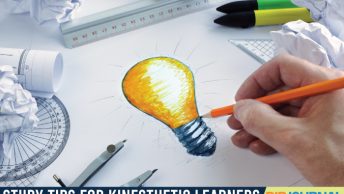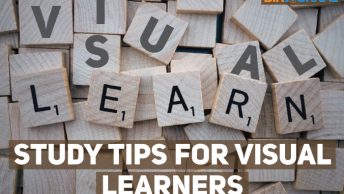Almost all people’s primary learning styles are visual, auditory, or kinesthetic. Very few individuals learn mainly from another style. Nonetheless, such people do exist, and what is to be done about them? Are they to be left hanging just because they’re such a minute minority that most don’t know they exist?
Even for those with primaries in one of the other areas, some might have trouble determining their secondary learning style. Maybe they were told one, but it doesn’t feel the best for them. One of these minority groups may be the actual secondary learning style of such people.
1. Smell
If you need to smell to learn something, your options are mainly limited to finding strong scents. For the classroom, find a body spray, perfume, or cologne that won’t bother or cause allergic reactions in those around you. (Basically, avoid flowers and fruits when picking it; something spice-scented would be best.) Some of you few might find that you need a different scent per subject or topic to best learn it.
Carry it with you if you must, to spritz it on your wrist between classes so you can quietly sniff it as needed in class. For studying at home, some scented potpourri, incense, or candles (or, in a pinch, soap), kept at your side for smelling while studying, might bring the grade.
2. Taste
Yes, you read that correctly. There are taste-based learners, people who learn best while tasting something. This is where polite gum chewing can make the greatest effect in the classroom or while studying, with a new piece of gum for flavor as needed. This might be easiest for those who end up needing a different taste for different subjects or topics, since the flavor naturally dies out and a different kind of gum can provide the difference. Unfortunately, it brings a good amount of sugar with it, and sugar-free options are usually less safe than their presumably unhealthy alternative.
Mints could also be used, but that shouldn’t be a primary method because it can cause more sugar problems and possible weight gain than the gum, though it might be worth it if you have braces or TMJ and can’t chew sticky things. You could also try having a healthy flavored beverage to sip on while learning, like some juice or tea. If you have blood sugar problems, a small healthy snack, like peanuts or baby carrots, might help, though you may not be able to use that option in the classroom.
3. Touch
This isn’t so much that you have to deal with something in a tactile manner to best learn it; this refers to needing your sense of touch stimulated for learning. This could be done in as simple a manner as pressing your fingertips together, or you could keep something on hand with a strong tactile experience, like a rough rock, to feel while trying to learn. If you need several sensations, you could try bringing several things to touch in your pocket, or you could improvise multiple feelings by putting a hand on your shirt, jacket, arm, pencil, and desk as needed.
Be sure that you’re discreet, though—you don’t want a teacher to mistakenly think it’s a toy and to take it from you or to scold you and penalize your grade for fiddling. If possible, keep the item in a pocket or someplace like that where you can place your hand without disturbing the teacher, and try not to be obvious that you’re toying with items in class.
Name a sense, and there’s a learning style connected with it. Not all are common or widely known, but all are equally legitimate. Just because classrooms cater to certain types doesn’t mean you have to. Is this one of your learning types?
Don’t let anyone laugh at you for it.













Those are certainly interesting learning styles, but it might really work. Perhaps a teacher could try and incorporate it in the classroom to see which student could be able to use it effectively. It might be also useful for students who are studying alone or at home.